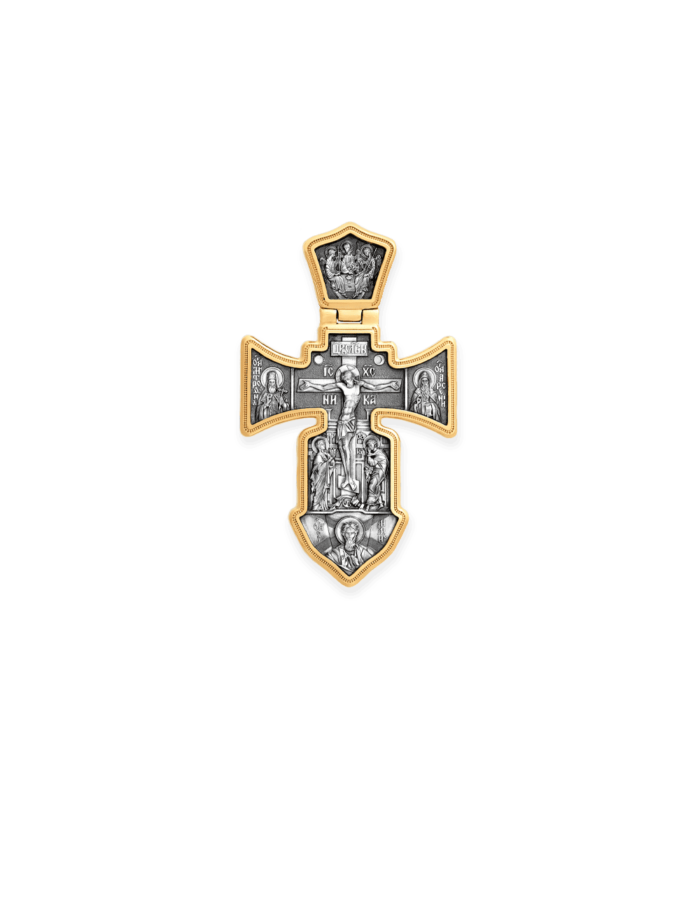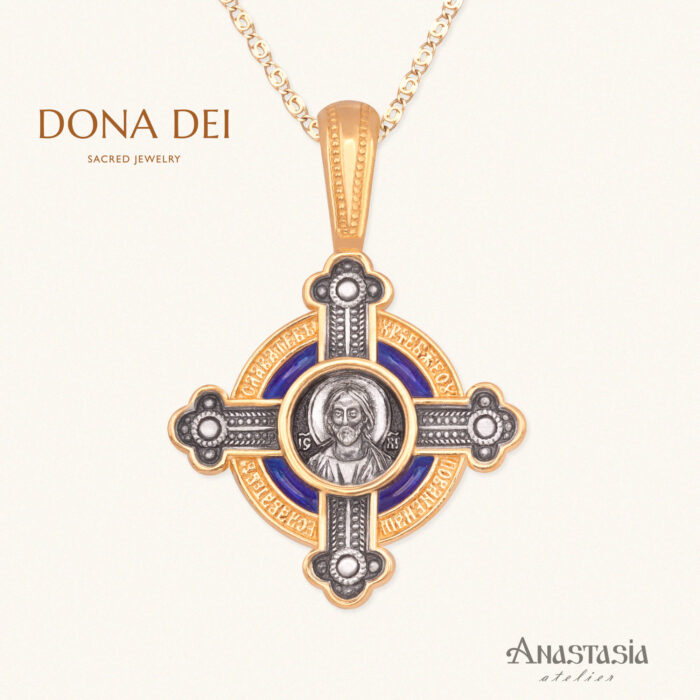Description
Attention, please! Pictures of enameled products are presented as illustrations. Before ordering enameled products, please send me a request, I will send you photos of the items in stock, and then you will be able to choose the color you like.
Size: 13,0×13,3 mm / 0.51 × 0.52 in
Weight: ~2,0 g / 0.07 ...ozEarly Christian Byzantine Enamel Cross Necklace THE BLOOMING CROSS
Miniature breastplate signs and pendants are variations of the widely spread initial form of a flourishing cross, the symbol of The Living Cross of the Lord. Such kinds of crosses were very popular in the Byzantine Empire – you could see them on the domes and gates of the churches, on the relics, and on the sarcophaguses and people were eagerly wearing them. The popularity of this sign is due to the strong symbolic connection between the Cross of the Lord and the Tree of Life. There are many legends, which directly connect the origin of Saviour’s Cross with the Tree of Life.
Even in the Old Testament, the idea of flourishing was used as proof of truth and legitimacy. An example of this is the rod of Aaron, flourishing as evidence of the high priest’s legitimate authority. It is possible that the abundance of images of a flourishing cross on various insignia was associated with this symbolism. Also, the symbolism of the vine, which, according to the gospel (John 15.1), means Christ himself, greatly influenced the development of this image.
In addition to what is said above, the flourishing crosses of the considered type, when two growth shoots come from the foundation of the cross, resemble in their form the early Christian images of the anchor, meaning Hope (Heb. 6,19). Most likely the anchor, as the earliest Christian symbol, served as the basis for the development of a form of this type of flourishing cross.
The basis of the composition of our flourishing cross is a four-pointed cross of Greek proportions with expanding beams. The ends of the beams form drop-like shootings, traditionally denoting drops of Christ’s blood or buds that are ready to blossom.A distinctive feature of our cross is an arc connecting the ends of the horizontal and upper parts of the vertical beam. Such arcs were encountered on some Byzantine breast crosses in the 8th – 9th centuries, denoting the dome of the sky.
All the composition of the flourishing cross expresses the universal festivity of the Living cross of the Lord from the Earth to the sky. Now crosses of this type are most often met in Christian art and culture as saint symbols.















